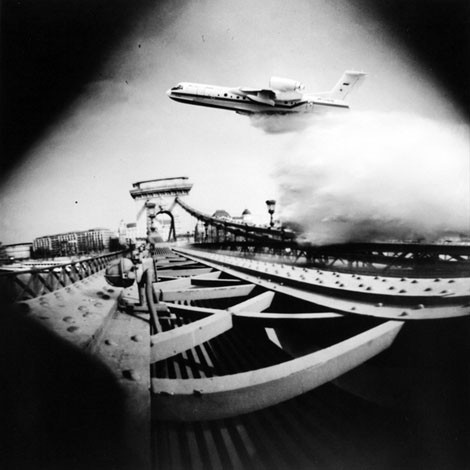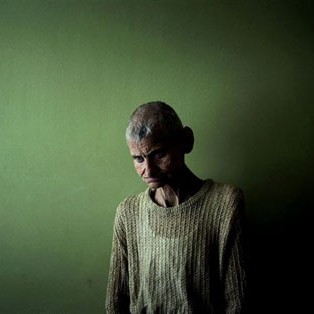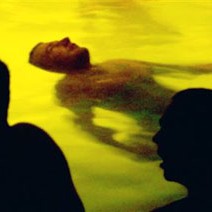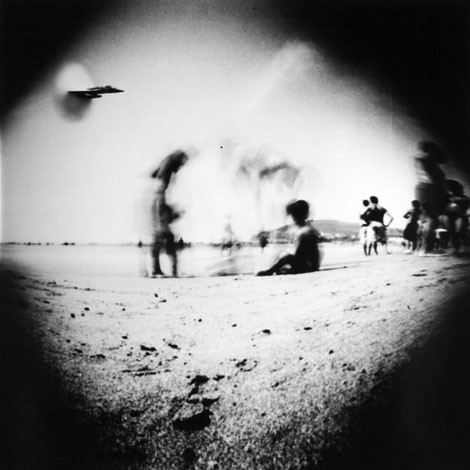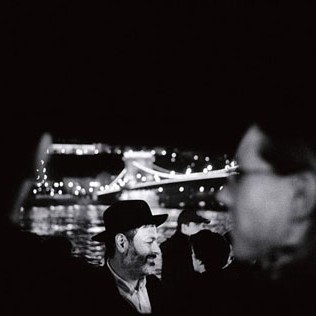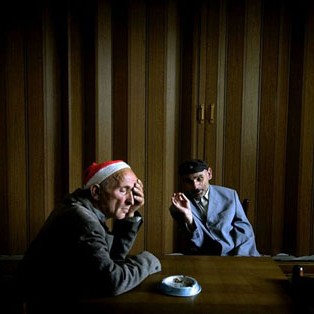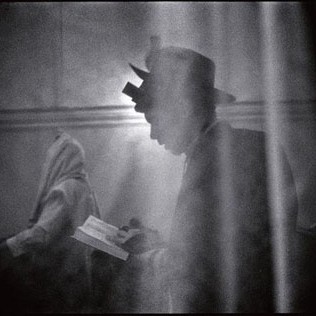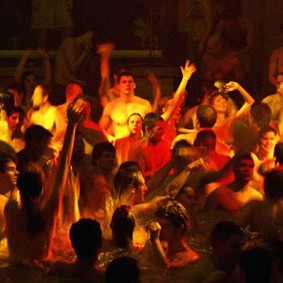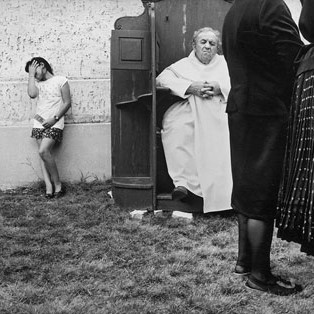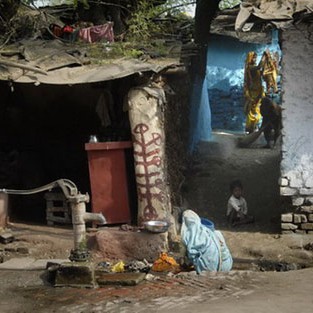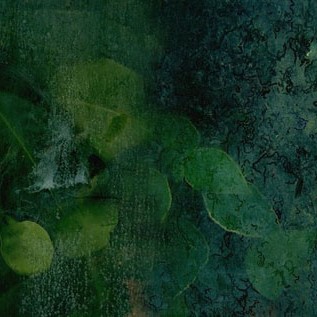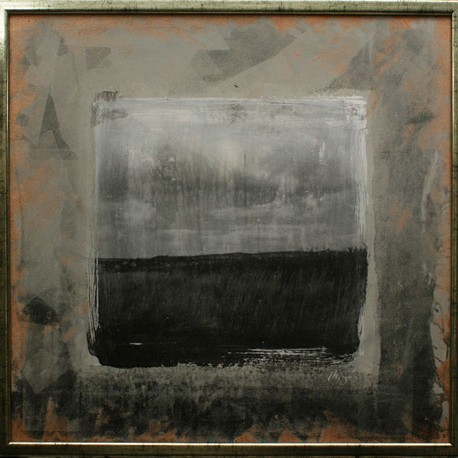For photography enthusiasts around the world, five names are emblematic of the success of Hungarian photography: André Kertész [Andor Kertész], László Moholy-Nagy, Brassaï [Gyula Halász], Martin Munkacsi [Márton Munkácsi] and Robert Capa [Endre Ernő Friedmann]. The photographs of these five men are guarantees of success anywhere in the world and their works have become the definitive icons of the period between the two world wars. At the same time, however, little is heard of post-war Hungarian art photography, as for political reasons the process in which Hungarian photographic works could be discussed within the context of universal photography came to a halt in Hungary after World War II. The new developments in photography seen elsewhere in the world did not reach Hungary or they did so only after a substantial delay. In many regards, Hungarian photography developed in isolation. It is only since the political changes of 1989/90 that one has been able to speak of Hungarian photography’s re-integration into universal photographic art. Still, progress in the 1990s was rapid, owing in large part to earlier efforts made within the subculture during the 1970s and 1980s. Despite the relative isolation, several Hungarian photographers received the highest recognition for their work. World Press Photo gold medals were won by László Fejes in 1966, László Török in 1972, and Imre Benkő in 1975 and 1978. The social photography of Imre Benkő, Tamás Féner, Gábor Kerekes, Péter Korniss and Lenke Szilágyi shows how, following different paths, it was possible to create pictures of value – sometimes in opposition to “official” art policies.
Works by members of the Association of Hungarian Photographers, which was established in 1956 and remains the largest photographic association in Hungary, have been selected for the exhibition. The pictures present developments in contemporary photography in Hungary as well as the various photographers’ ideas that are based on the traditions of Hungarian photography. The selected works also demonstrate the process of integration into international developments.
The photography of Zsolt Péter Barta, Imre Drégely, Aliona Frank, Sándor áron Károly and Károly Minyó Szert can be traced to roots in Hungarian experimental photography. Even so, most of the works were made using twenty-first-century photographic methods. On the other hand, the photo-reports of Lenke Szilágyi, Tamás Dezső, Tivadar Domaniczky, Zsolt Szamódy, and Zoltán Vancsó demonstrate the survival of classical photojournalism.
The X-Code series by Zsolt Péter Barta amounts to a further development of the highly successful CodeX series. The previous series was based on traditional black and white technology, and a series of large-scale works revealed the great many details of the passing moments of our lives; in contrast, the continuation of the series is based on digital photography. And although the technology would have permitted the selection of a larger picture size, Péter Barta Zsolt depicted his themes in smaller sizes, so that they are not alienated from viewers.
In contrast, Imre Drégely seeks to alienate the topics of his photographs – by means of digital duplication, in which the spaces chosen by him and the other topics depicted are transformed into signs merging into a mathematical world; his photographs reflect the same visual features, irrespective of the theme portrayed. His series is an important element in contemporary Hungarian photography because it exemplifies how digital technology not only represents a technical shift but also influences our attitudes towards photography.
The photographs by Aliona Frank were made with the same sensitivity of portrayal that she displays in all her photographic series. In her art, depicting the visual signs of individuals is important – either through portraits attributable to the craft of the subject or, indeed, by conjuring up a silhouette, which causes us to recall the imprint of a person.
The digitally-based historical procedures of Sándor áron Károly are excellent examples of how it is possible to use the historical procedures of the period before World War I in today’s digital age, so that due significance is given to the content of the photographs. After digitalisation, his pictures become fake documents created by various computed-based programmes – which are then authenticated by Károly through historical picture development.
Károly Minyó Szert’s series, entitled Twelve Bagatelles, draws from the “ready-made”. The negatives that serve as the basis of the photographs passed into the possession of the artist during house-clearings. It was only subsequently that they were imbued with a pictorial form marking a transition between photographs and paintings – a world which is, based on the stylistic characteristics, a particular feature of all of Minyó Szert’s photographs.
Regarding Tamás Dezső’s documentary photographs, it really does not matter whether they were made in Hungary or in Bosnia and Herzegovina, because all aspects of the young oeuvre include the photographic perspective that is Dezső’s unique signature. His photography reflects a humanism that is focussed on human dignity. His photographs arise in reaction to developments taking place anywhere in the world. His works are known throughout the world and he has received considerable international recognition.
The series by Tivadar Domaniczky depicting the life of Budapest’s Jewish communities is not without precedence. In the early 1980s, Tamás Féner published an album of this kind – which the cultural politicians of the day sought to have banned. While Féner’s works tended to be related to cultural anthropology, the series by Domaniczky gives greater emphasis to an essayistic nature – which, however, he individualises by piercing it with his own subjective opinion.
Similarly to Zsolt Péter Barta, Lenke Szilágyi made a Cinetrip series using digital technology – after employing the elaborate black and white traditional method of making photos. The series depicts happenings at a nightclub in Budapest – partygoers dancing and chatting at a foam party. It was the artist’s first endeavour in this area; her photographs are visionised and created spaces rather than pictorial documents.
The photographs by Zsolt Szamódy depict India for East Europeans – who only know it through photographs. The depictions were made in an unusual manner. Similarly to the travelling photographers of the nineteenth century, Szamódy produced the pictures with an aesthetic quality that has become his signature. The pictures are not faithful representations of Indian society. Instead, they are personal visual experiences, unprejudiced documents of desperation, of the aesthetics of poverty and of the existence of universal man.
The photographs by Zoltán Vancsó were not made in a specific delimited area or along visible themes. His pictures are mosaic pieces of subjective, documentary photography. They are unique pictures that can be only loosely woven together. His photography tells both of people and of imprints – using the means available in documentary photography.
Péter Baki
Exhibition curator - Péter Baki
Exhibition cocurator - Gabriella Uhl
.png)
